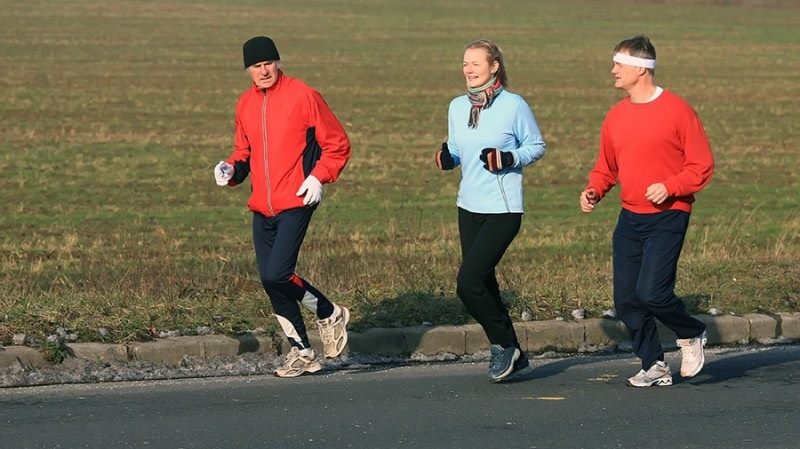While exercising outside during cold weather can be perfectly safe, it does require some additional "warming up". Why? Because, the body actually has to work harder to perform in the cold than during warmer weather.
When the body is exposed to a significant change in temperature, elevation or intensity, its initial need for energy increases, so it breaks down glycogen, a form of carbohydrate, in the muscles. Maintaining that energy level is more difficult in cold weather.
Here's what you can add to your workout to maintain energy during cold weather:
- Eat a meal rich in carbs and protein 2-4 hours before your workout as a fuel source. This will help you maintain a higher energy level.
- Warm-up...more than usual. First, do warm ups at home before you go out for your workout: stretches, knee circles and whatever you do before your warm weather workouts. Then, do a warm up outside: light jog before your more intensive one, jumping jacks...whatever you can do to get the body warmer.
- The cold diminishes thirst by up to 40%. Dehydration during cold weather exercise carries the same risk as it would when exercising in the heat, but you may not feel as thirsty. Be sure you bring your water bottle and stay hydrated.
- Consider the wind chill when for working out in cold weather activities. And, high altitudes are significantly cooler than lower levels of elevation. Hypothermia is a risk when working out in extreme cold.
- Layer your clothing to protect you from the elements. It is easy to remove layers, but be sure you have layered enough! Dress appropriately for the outdoor temperatures.
- Don't ignore signs of stress. Your body talks...listen to it!









